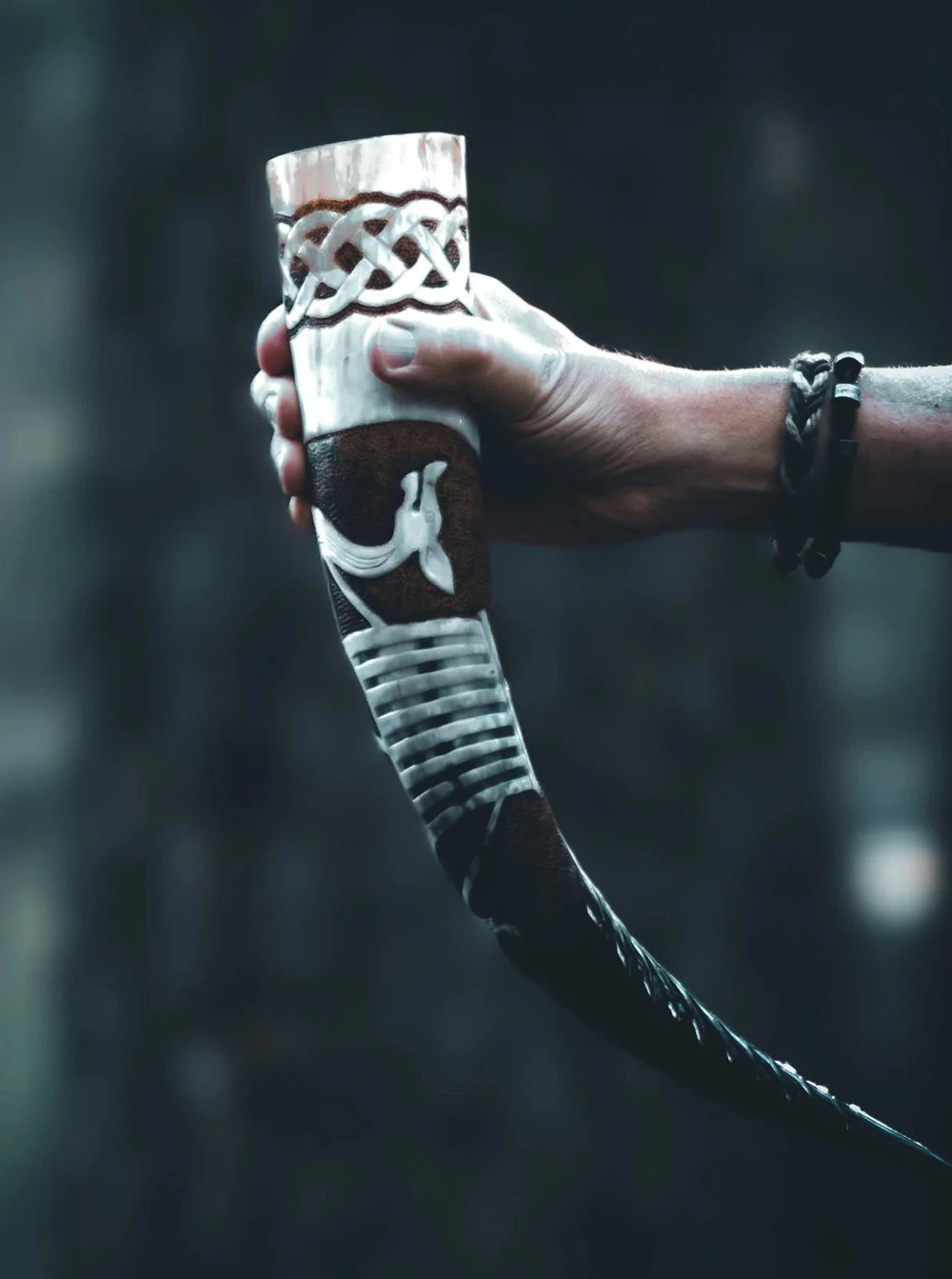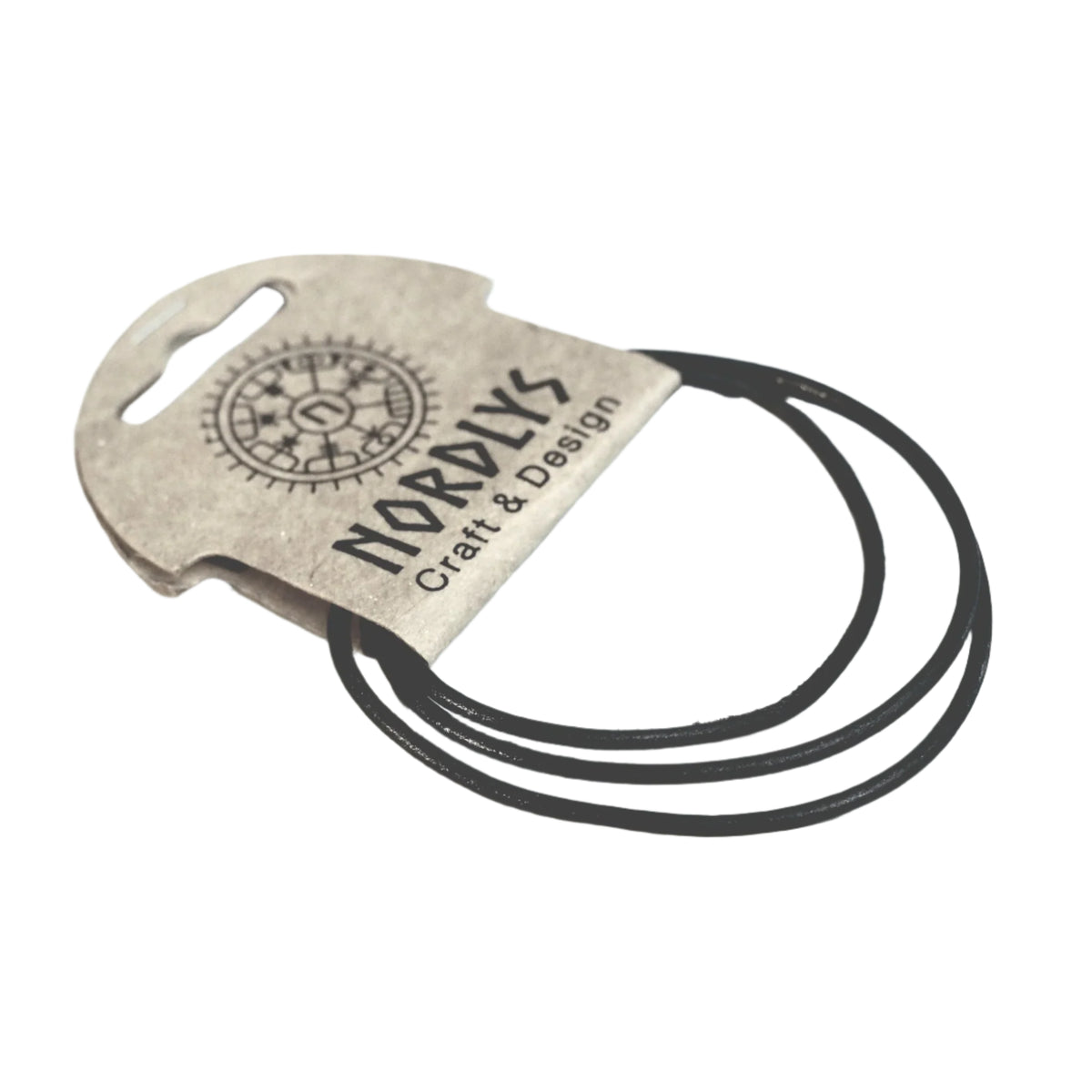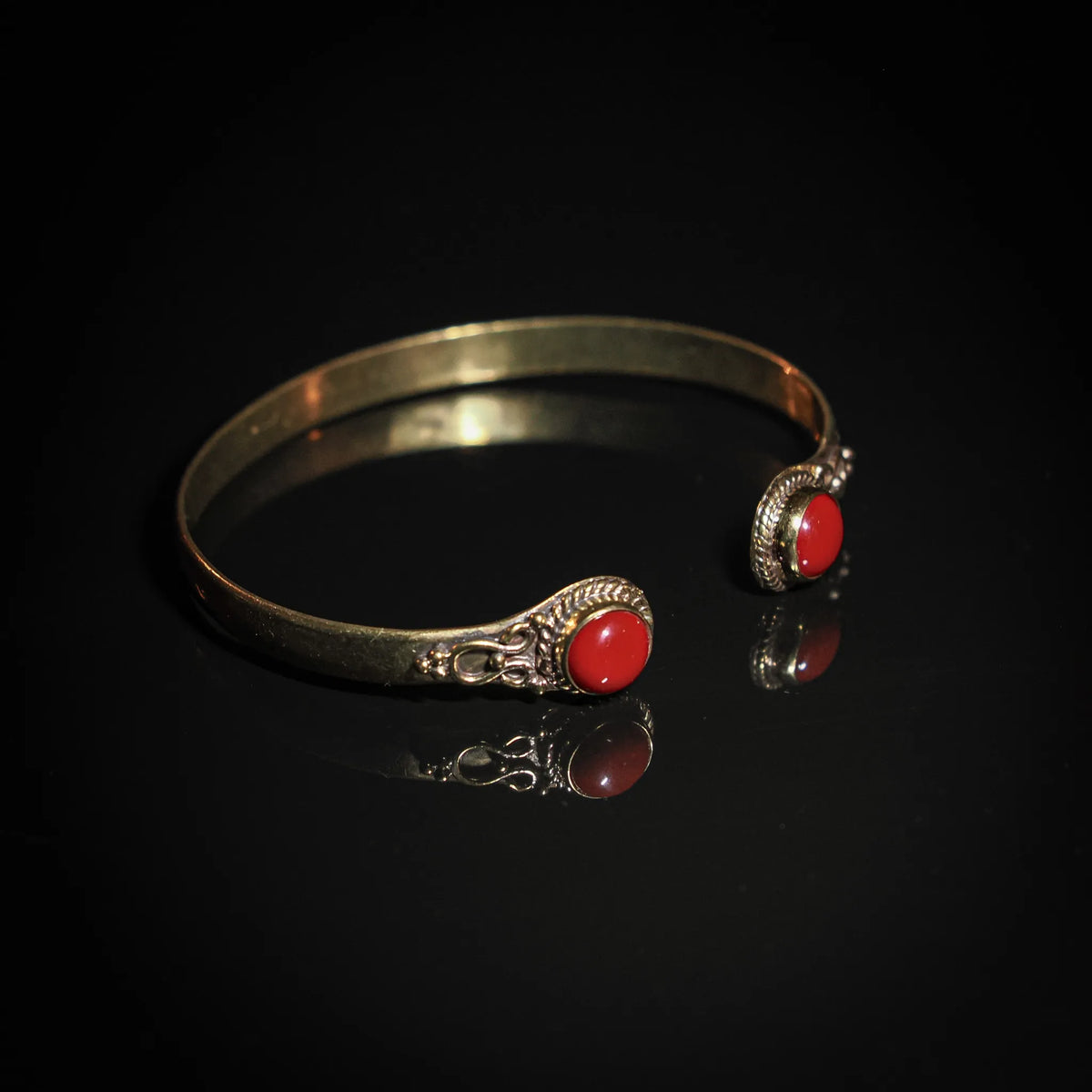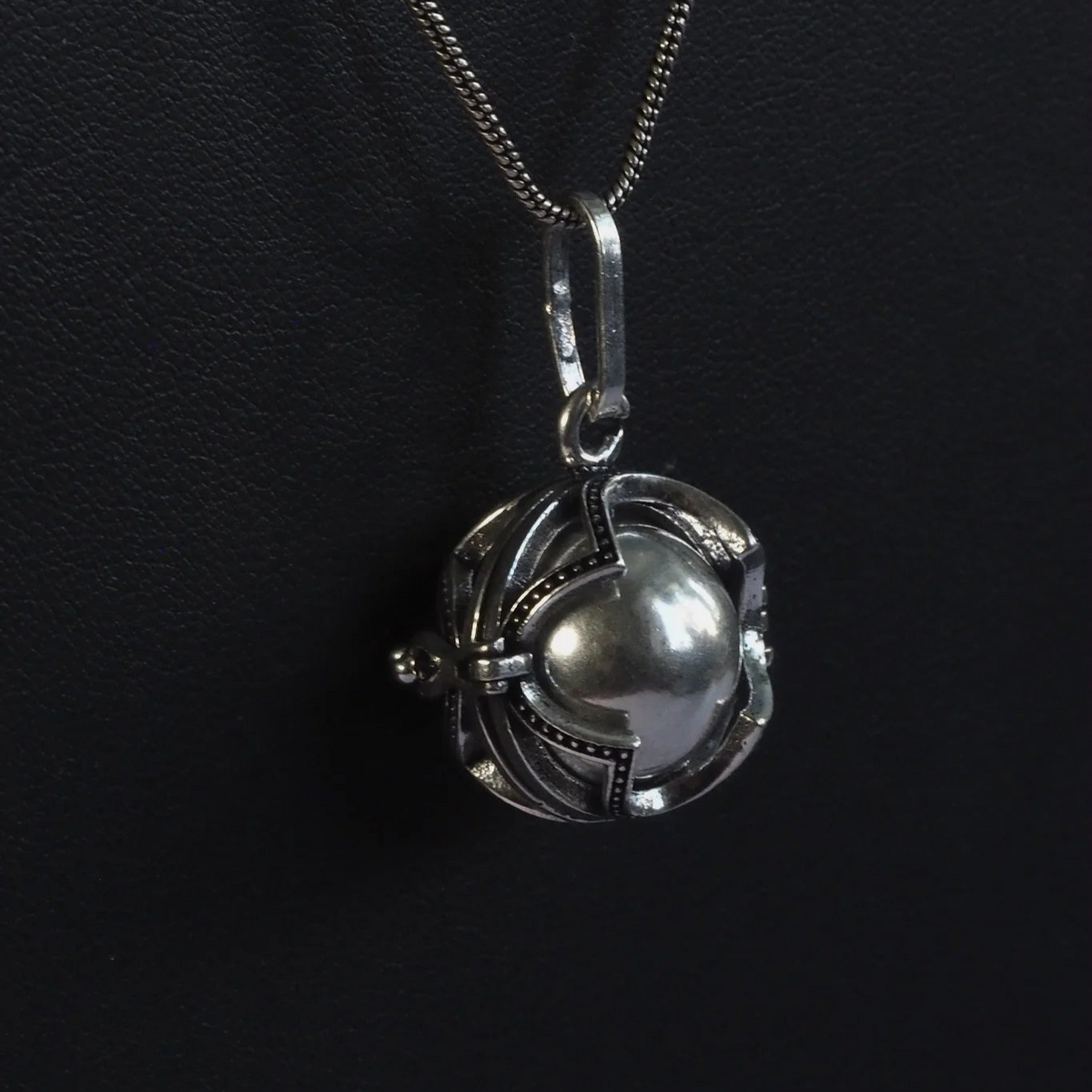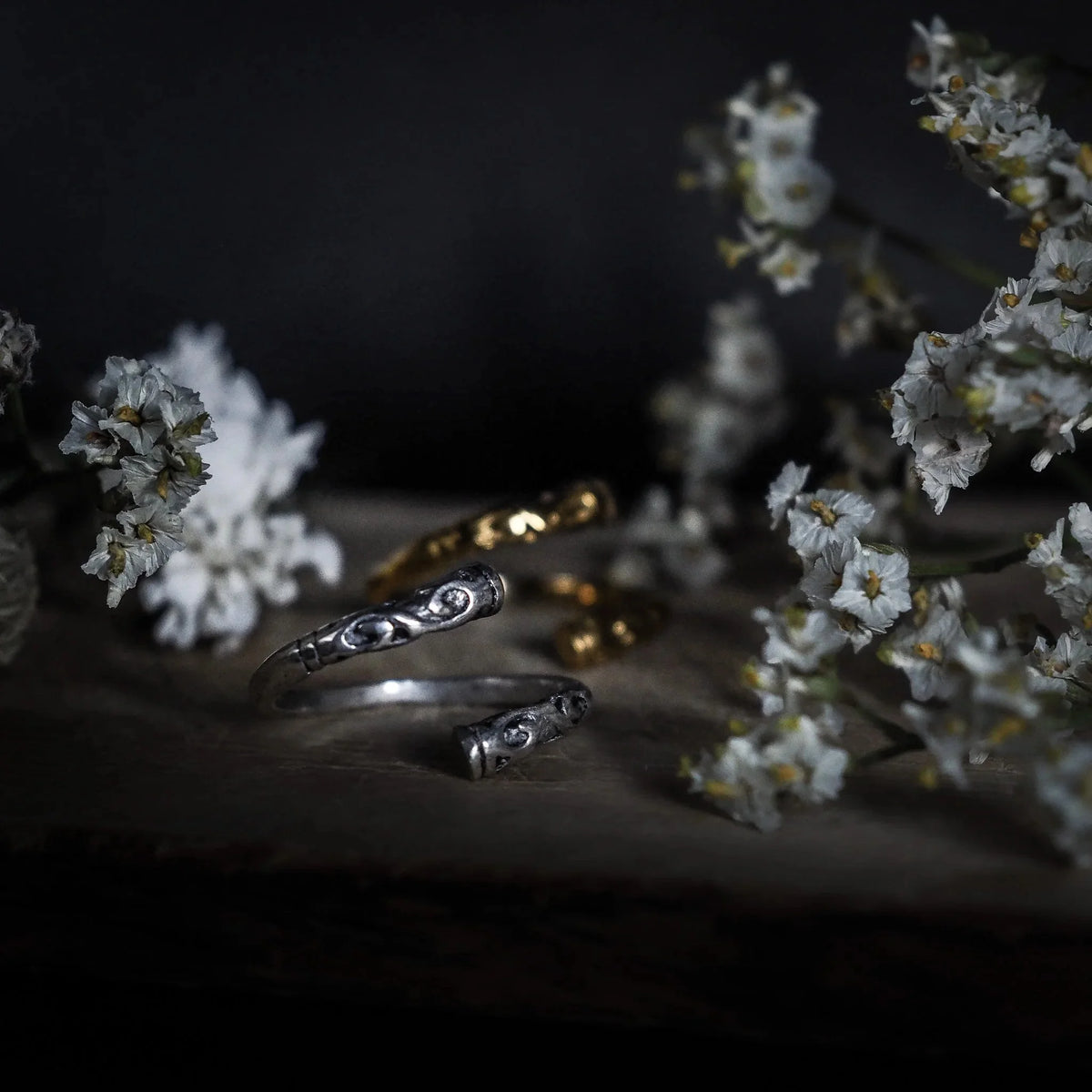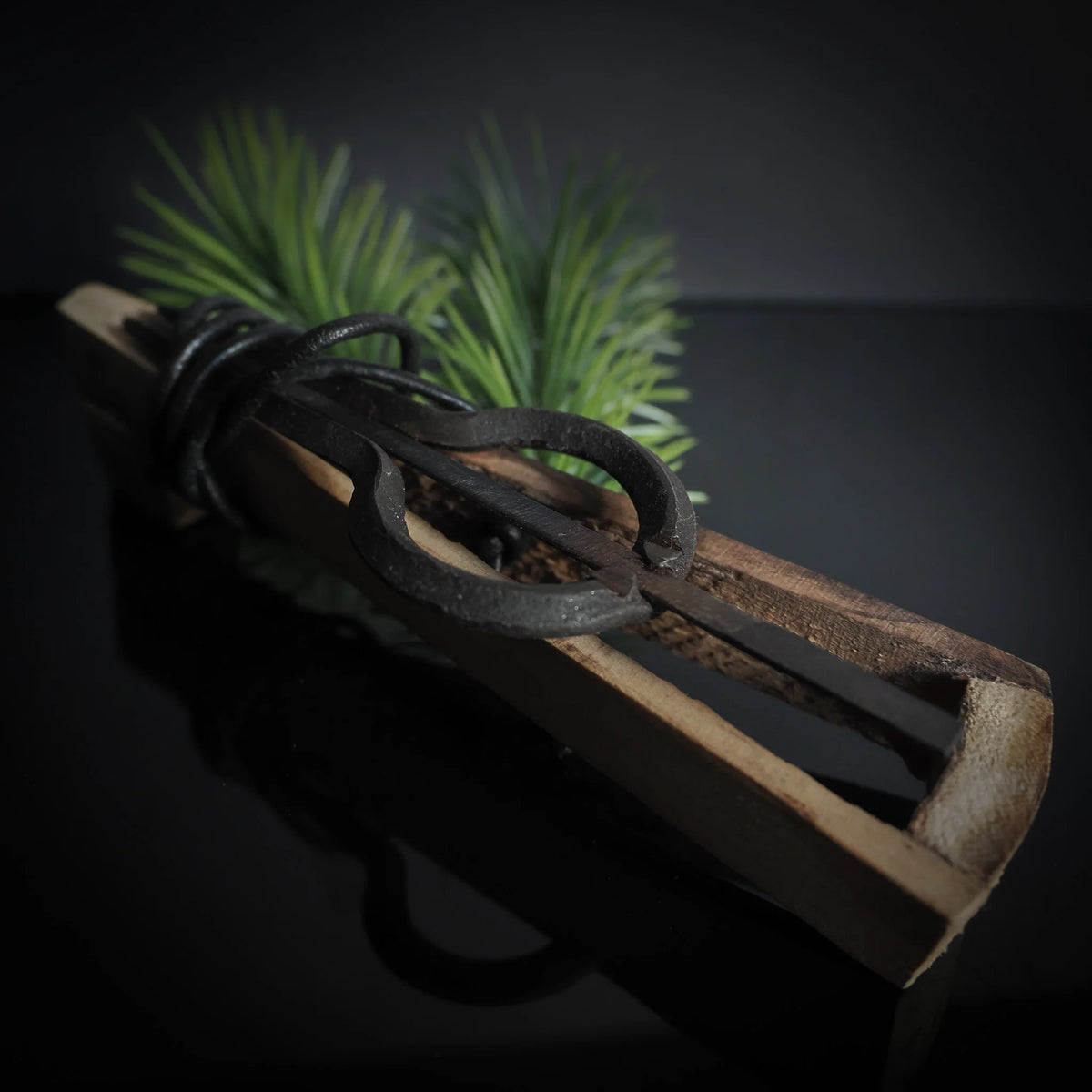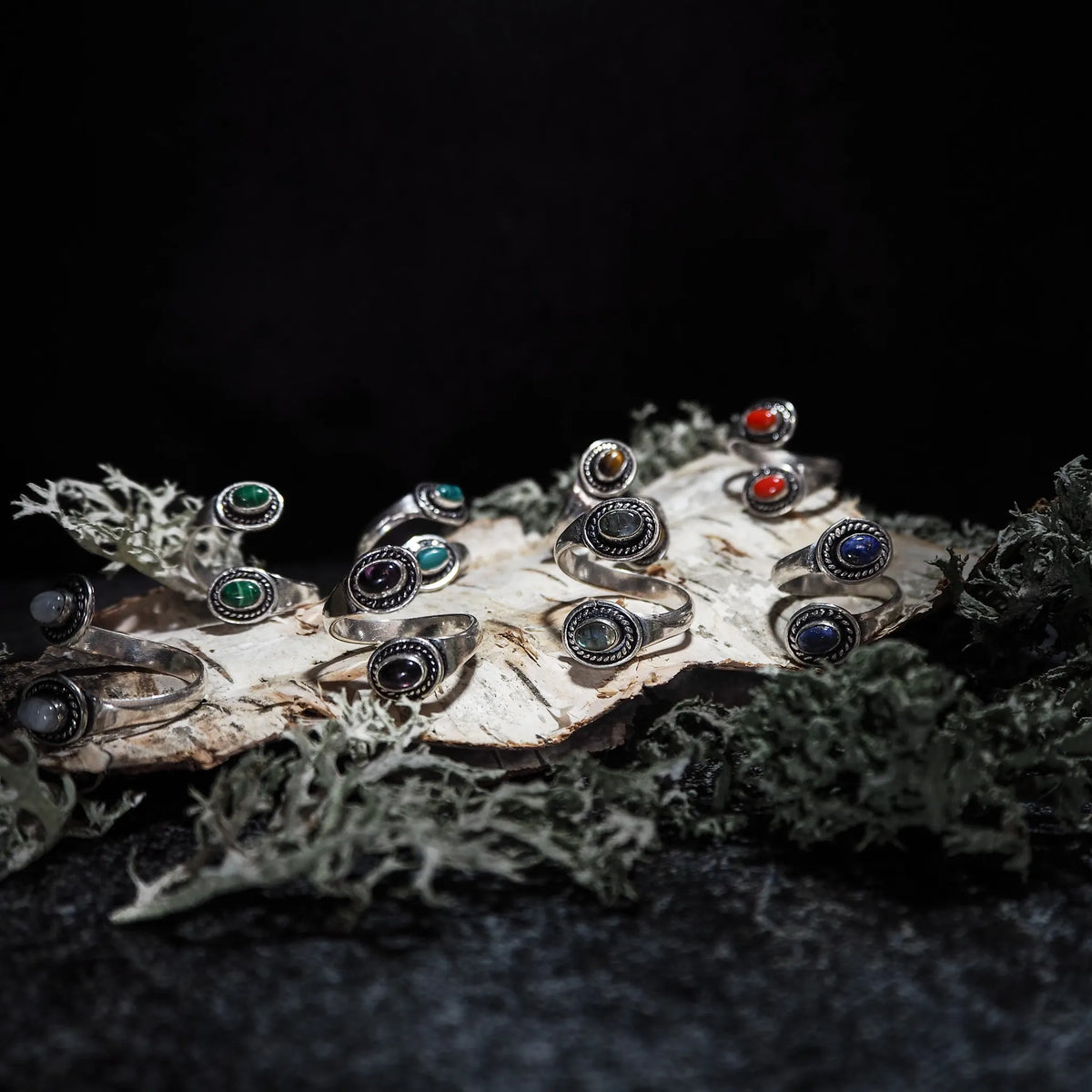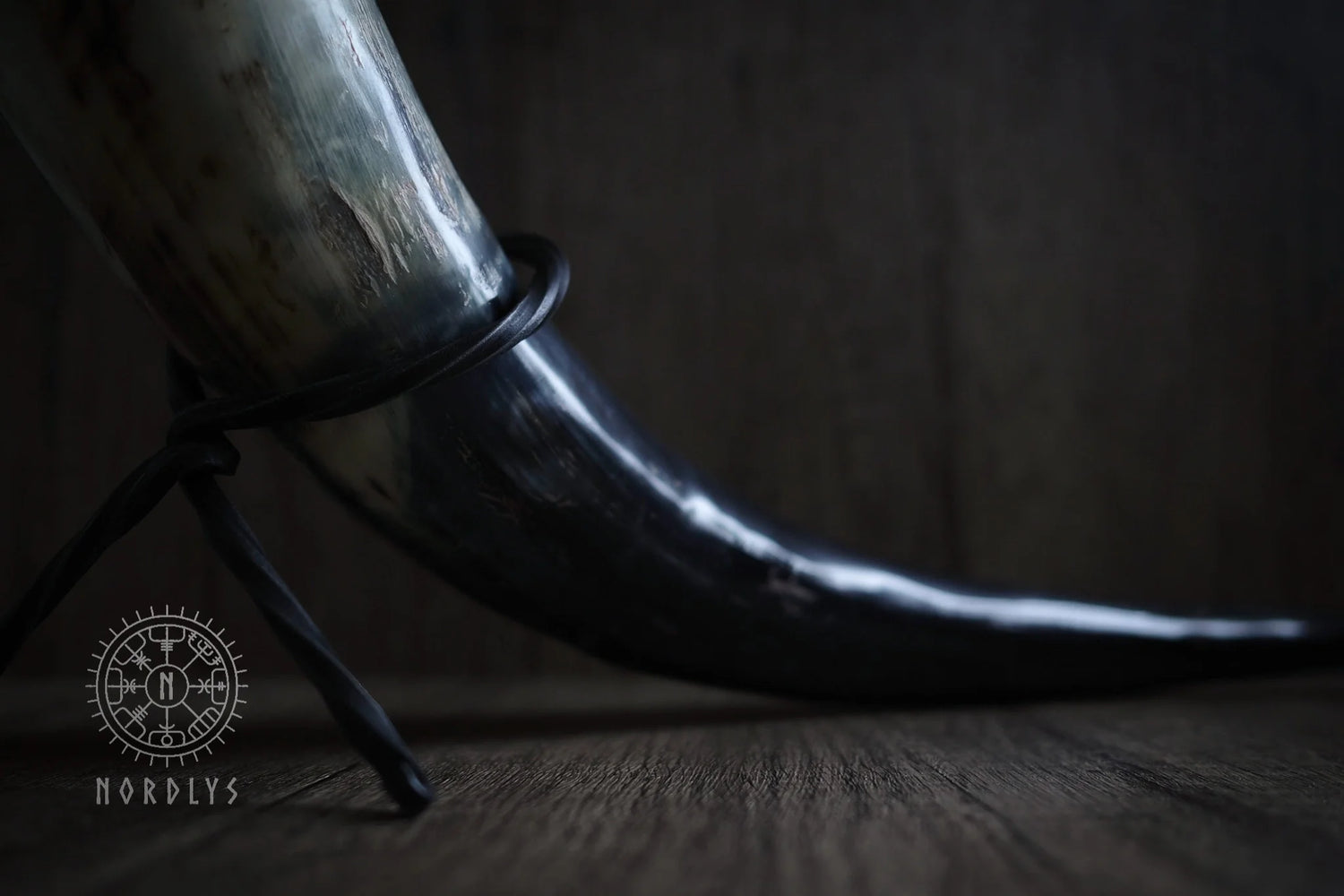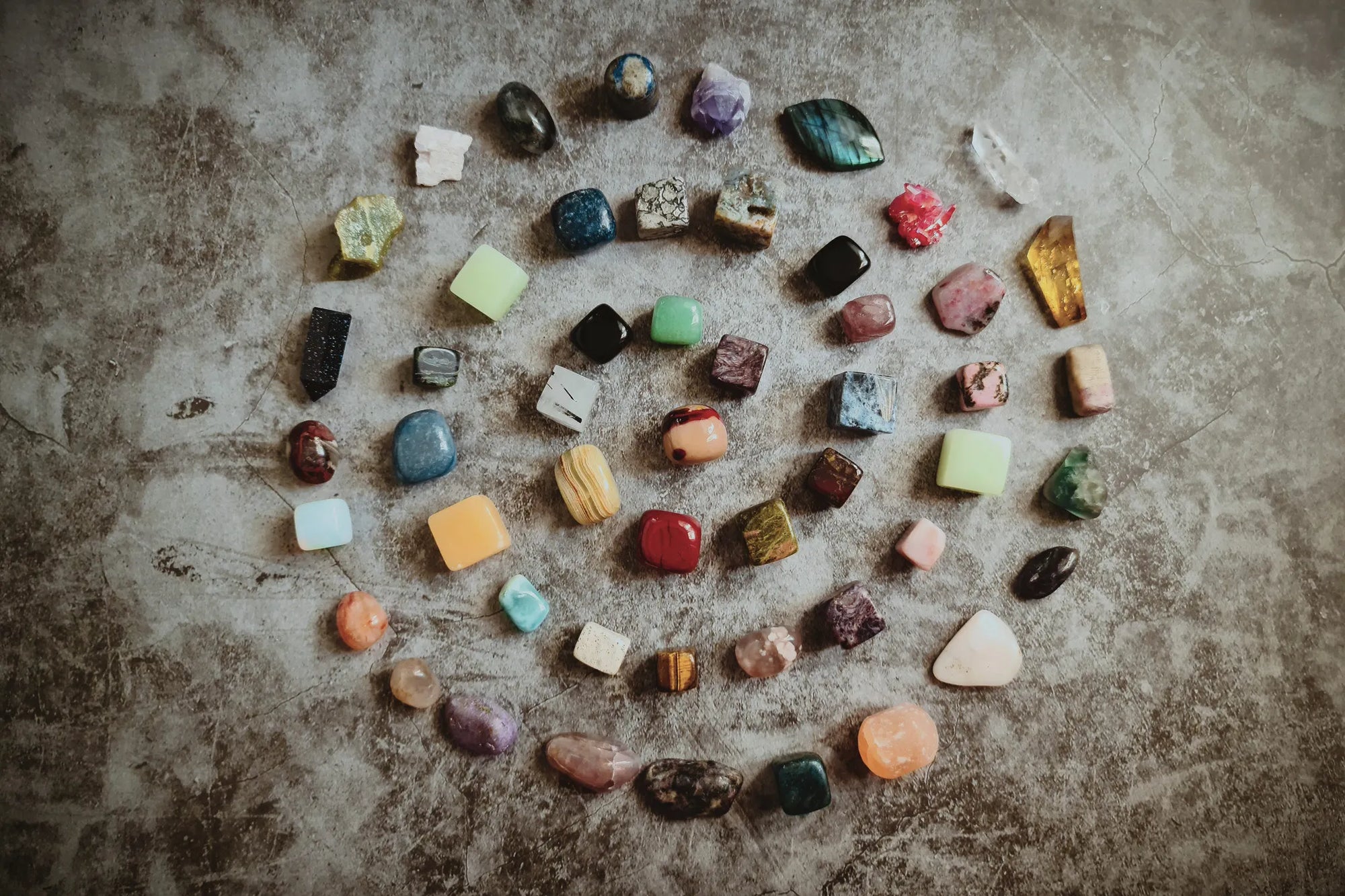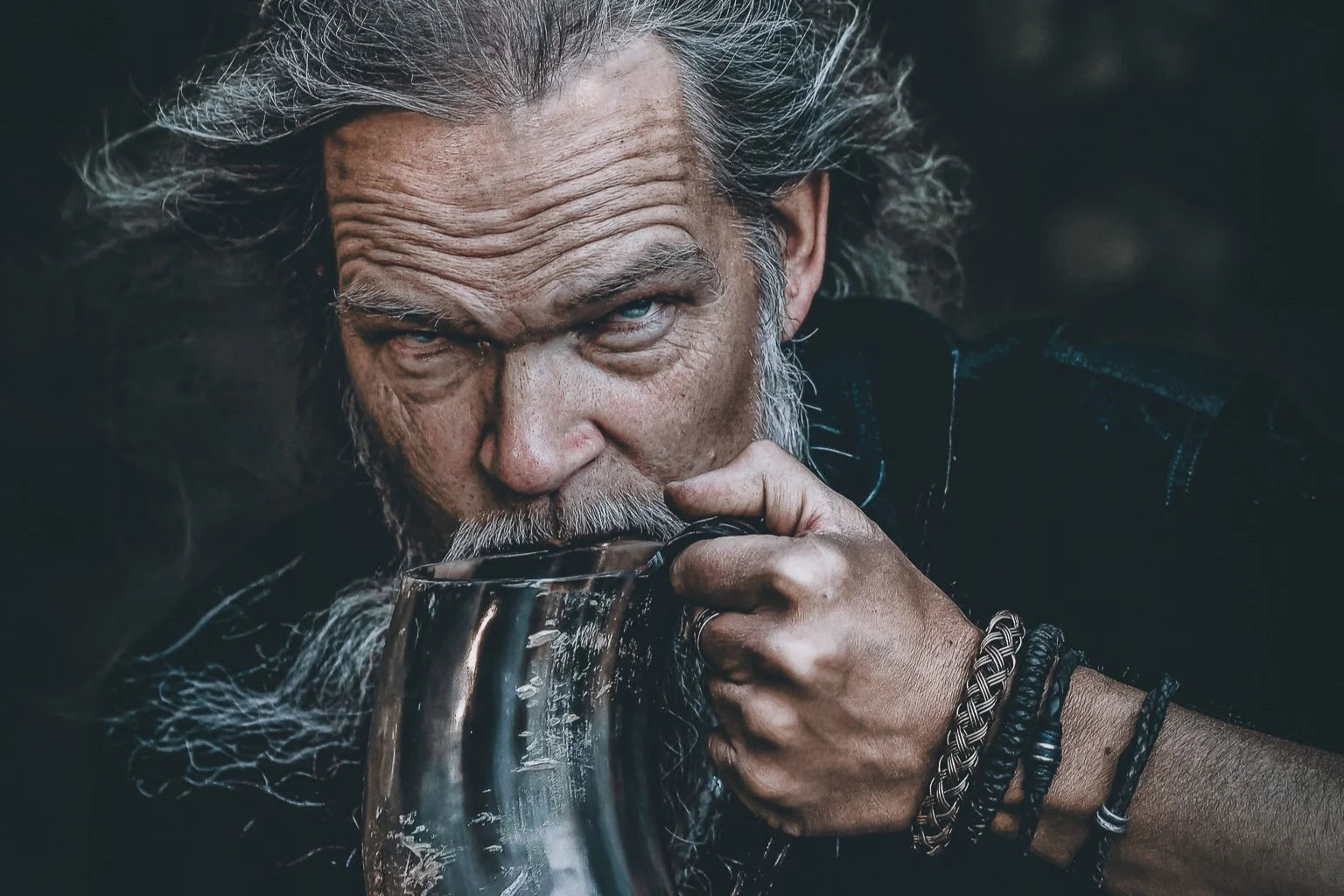- Are vikings from Sweden?
Vikings came from all over Scandinavia and travelled far afield, just like us here at Nordlys, only we don't plunder the places we visit, not every time anyway!
- What were viking beads made of?
Viking age beads were made from a range of materials, the most used material was glass but they were also made from precious metals and stones like carnelian and amethyst or even animal bones.
- Viking beads
One of the staples of the early trading towns of 8th century Scandinavia was having a bunch of professional glass beadmakers. They appear in towns like Kaupang, Ribe and Birka, as it happens we sell several historical replicas of gravefinds from these towns.
- What beads did vikings wear?
The vikings wore homemade and exotically traded beads, mainly from glass but precious metals and stones were also common.
- What are/were viking drinking horns made of?
During the viking age drinking horns were made mainly from cow horns, since they didn´t de-horn their cows they had yet another resource to put to use.
- How to make a viking drinking horn
- How do I wash my drinking horn?
- Who made viking jewellery?
- Why did vikings wear jewellery?
- What did viking jewellery look like?
Viking jewellery were masterpieces made mainly from precious metals with beautiful designs that could be animalistic or geometric and often took on a mythological aspect as well, depicting Odin, Thor or Sleipnir to name a few.
- What did the Vikings drink from?
The Vikings drank from many different containers and materials, drinking horns made from cow horns were a very common material. Since the Viking Age farmers did not dehorn their cows, they had a huge resource to use to make drinking horns, combs and spoons. You could almost call it prehistoric plastic.
- What did Viking Age jewelry look like?
The Vikings used jewelry to show off their wealth and status in society, but surely they also just wanted to look nice just like we do today. The jewelry was a solid craft created by master craftsmen and was made in many different materials and shapes where animal ornaments and mythological elements were very common.
- What is a mead hall?
- What was the Vikings' favorite drink?
- How did the Vikings drink their beer?
Viking age finds of drinking vessels come mainly in the form of ceramic or metal as it survives best in the ground, but there are some finds of fine horns, sometimes carved, which have survived in environments completely devoid of oxygen. There are also horns decorated with brass and bronze, and lots of iconography of people holding drinking horns.
- What is a mead horn?
- When was the Viking Age?
- What was the religion of the Vikings?
- Who were the gods of the Vikings?
- Did Odin really exist?
- What is the difference between the Viking Age and the Middle Ages?
- What was the Vikings favorite game and can we play it today?
- Were there Vikings in Scotland?
- What did the Vikings call Scotland?
- What did the Vikings do in Scotland?
- Were there Swedish Vikings in Scotland?
Genetically speaking, Vikings from today's Norway had the greatest impact on the Scottish population, but there are also traces both genetically, linguistically and archaeologically of Vikings from today's Sweden and Denmark.
- Were there Vikings in Ukraine?
- Which countries did the Vikings travel to?
- Where did the Vikings land in England?
-
One of the most famous landings is Lindisfarne in AD 793 when Vikings raided a monastery on the island. It was not the first landing on the island but according to British sources it was the first significant one as it struck at the heart of Anglo-Saxon Christian territory. Less than a hundred years later, a huge army of Scandinavians and Frisians landed, in English called "The Great Heathen Army". They landed in Östangle in AD 871 to join an army that had already overthrown the kingdom of Northumbria under the leadership of three of Ragnar Lodbrok's five sons Halfdan, Ubbe and Ivar Benlöse. For the next 15 years they ravaged the Anglo-Saxon countryside and eventually established the Danelaw.
- What was the Danelaw? (Danelaw)
-
The name refers to the part of Anglo-Saxon England that was ruled by a Scandinavian aristocracy mainly from Denmark. The area includes eastern and northern England with Jorvik (York) as one of the most important cities. It began in AD 865 with an invasion of England led by three of Lodbrok's sons, but it is not until the 11th century that the Dane Law is mentioned in writing. Even today there are traces in the form of place names with Scandinavian origins, an example is Coppergate in York which translates as Koppari street. Koppari means cup, so the name may have been Koppmakargatan in Jorvik.
- Were all Swedes Vikings?
-
No, not all Swedes were Vikings, that applied to all of Scandinavia. The word viking means one who goes on an expedition, usually at sea and usually with more people Vikings. The activity viking we don't know anything definitive about either, but it could clearly include looting. However, it may well have included longer trade trips as well. Having said that, there were probably Nordics who lived their whole lives in the Nordics and never moved in viking.
The vikings wore homemade and exotically traded beads, mainly from glass but precious metals and stones were also common.
- What are/were viking drinking horns made of (Einstein award goes to..?)
During the viking age drinking horns were made mainly from cow horns, since they didn´t de-horn their cows they had yet another resource to put to use.
Highly skilled and specialised craftsmen made jewellery from gold, silver and bronze. What might surprise you is that brass and zinc among others were also in use in towns like Ribe from the 8th century onwards.
They vikings wore jewellery as a sign of their wealth and status in society, but it could also show signs of an adventuring lifestyle since materials like amethyst are not local in Scandinavia and must have been traded or plundered from far away.
Viking jewellery were masterpieces made mainly from precious metals with beautiful designs that could be animalistic or geometric and often took on a mythological aspect as well, depicting Odin, Thor or Sleipnir to name a few.
The Vikings drank from many different containers and materials, drinking horns made from cow horns were a very common material. Since the Viking Age farmers did not dehorn their cows, they had a huge resource to use to make drinking horns, combs and spoons. You could almost call it prehistoric plastic.
The Vikings used jewelry to show off their wealth and status in society, but surely they also just wanted to look nice just like we do today. The jewelry was a solid craft created by master craftsmen and was made in many different materials and shapes where animal ornaments and mythological elements were very common.
Briefly, a mead hall is a longhouse from the Iron Age that was the literal and figurative center of the farm/village. There the earl could hold feasts to give bangles in exchange for favors or build relationships between kin and tribes to ensure the stability of the area. New research from Norway indicates that they may have been painted in blue, yellow and red.
The most common answer is usually mead, i.e. honey wine, but not many people know that the Vikings also drank mölska, which is a type of beer that is brewed by fermenting honey and malt. In the popular media, Vikings are often depicted drinking a frothy mead, but this would actually fit better with mothballs!
Viking age finds of drinking vessels come mainly in the form of ceramic or metal as it survives best in the ground, but there are some finds of fine horns, sometimes carved, which have survived in environments completely devoid of oxygen. There are also horns decorated with brass and bronze, and lots of iconography of people holding drinking horns.
A mead horn was a horn usually from a cow, but could be made from a goat, from which you drank mead. At large feasts and gatherings, a horn could be passed round and then passed three times around a statue of a deity as part of rituals that could have to do with wishing for a good harvest or good luck on raids.
Usually the English periodization is used 793 - 1066 AD, it refers to the attack on Lindisfarne as the starting point and Harald Hårdråde's defeat at Stamford Bridge. Scholars have argued about this for a long time and will continue to do so long after our time, it really depends entirely on where in Europe you choose to look and what material you use to date.
Today it is often called Old Norse religion, but it is important to remember that our view of religion and what it means may not match how the Vikings saw their world. An expression that comes to us today from the Vikings is: Forn Siðr which roughly translates to ancient custom, so tradition was important to them, which gives us a small insight into their way of seeing the world.
There are many gods in Old Norse, but the ones most often mentioned are Odin, Thor and Frej. Odin is often seen as the Allfather, and is seen as the god of aristocracy as many kings trace their lineage back to Odin. Even the Christian kings of today's England had Odin in one form or another as a descendant or progenitor. Thor was often seen as the more popular god who kept humans safe from giants and Frej, a fertility god who could bring good harvests.
The short answer is no, he probably didn't really exist but he is rooted as the god of the dead and the god of warriors has very old origins, even if his name has changed over time. Some researchers believe that the roots of the archetype may be older than the Bronze Age in Sweden, i.e. more than 3000 years! Odin's connection to shamanism may be a result of interactions between Scandinavians in the south and Sami people in the north.
This is very variable depending on which country you start from, in Sweden the difference between the Viking Age and the Middle Ages is mostly that the writing begins to be used. But also that the aristocracy and eventually the entire population become Christian. This takes place during the 11th century in Sweden, but the line is usually drawn at 1050 AD, although it was a variable process in different places.
Hnefatafl may have been one of their favorite games, and yes we can play it today. It was so popular that we find game plans carved on the rowing benches of the longships. We also find lots of bone dice, they appear in many different shapes and sizes so we can assume that different forms of dice games were also popular among the Vikings.
Yes, the Vikings invaded and colonized parts of Scotland. Including Orkney, Shetland and the Isle of Man. The Vikings left their mark genetically, architecturally and linguistically as the Norn language was a mixture of Gaelic and West Old Norse. The language has today been revived in the form of Nynorn.
The Vikings called the northern islands of Scotland Northern Isles and the southwestern islands were called Shetland Islands. Shetland i Northern Isles was only 300km from the Norwegian coast and with good weather in a longship the journey took about 24 hours to complete.
Usually we only hear about Vikings as raiders and pirates, this is true to some extent as Harald Hårfager is said to have occupied Northern Isles in the late 8th century as a result of Scandinavian pirates who ravaged the waters around Shetland and Orkney. Of course they traded and some settled down and lived peacefully, at least occasionally.
Genetically speaking, Vikings from today's Norway had the greatest impact on the Scottish population, but there are also traces both genetically, linguistically and archaeologically of Vikings from today's Sweden and Denmark.
- Were there Vikings in Ukraine?
Absolutely, the Scandinavians who left the most genetic traces in the area were Vikings from central Sweden, Öland, Gotland and Åland in Finland. They stuck not only to the Ukraine but also the Baltics and Russia along the Don, Dnieper and Volga rivers. The journey east for the Scandinavians probably began before the western expansion as two boat graves from Ösel have been dated to that 750 AD and has strong parallels with the boat graves from Vendel and Valsgärde north of Uppsala.
There was no name for Ukraine specifically, but the area around the Baltics, Ukraine and western Russia was named Garðaríki. Garða can refer to a fortified village or town and state is often translated as kingdom or country. Garðaríki can then be translated as city kingdom or village kingdom.
They explored, they traded, they raided and they integrated with the local population. When Ibn Fadlan visited rushes on the Volga River in the 9th century, many in the area were probably a mixture of Scandinavians and Slavs. The word Slavs are often mentioned in Arabic texts from the Caliphate and today are linked with people who were captured in Eastern Europe and sold in the Caliphate slave markets. INbn Khurradadhbeh tells of Norse traders who bring high quality swords and furs from Scandinavia to the shores of the Black Sea. Ibn Khurradadhbeh also notes that Norwegians were in the Byzantine court already during the early 8th century AD.
Yes, the common view is that people from the east and between Sweden and Åland traveled east along the eastern European river countries, while Norwegian and Danish Vikings traveled west towards England and Iceland.
The Scandinavians traveled as far west as North America and as far east as Uzbekistan. It is mentioned in the majority of historical sources that a Björn Järnsida and his company went south in the middle of the 8th century and raided the Iberian coast and then sailed through the Strait of Gibraltar and finally captured and sacked Pisa. When they then passed the Strait of Gibraltar on their way home, they were surprised by the Muslim Caliphate that ruled large parts of the Iberian Peninsula. Only 20 of the roughly 60-70 ships returned to the Frankish coast.
One of the most famous landings is Lindisfarne in AD 793 when Vikings raided a monastery on the island. It was not the first landing on the island but according to British sources it was the first significant one as it struck at the heart of Anglo-Saxon Christian territory. Less than a hundred years later, a huge army of Scandinavians and Frisians landed, in English called "The Great Heathen Army". They landed in Östangle in AD 871 to join an army that had already overthrown the kingdom of Northumbria under the leadership of three of Ragnar Lodbrok's five sons Halfdan, Ubbe and Ivar Benlöse. For the next 15 years they ravaged the Anglo-Saxon countryside and eventually established the Danelaw.
The name refers to the part of Anglo-Saxon England that was ruled by a Scandinavian aristocracy mainly from Denmark. The area includes eastern and northern England with Jorvik (York) as one of the most important cities. It began in AD 865 with an invasion of England led by three of Lodbrok's sons, but it is not until the 11th century that the Dane Law is mentioned in writing. Even today there are traces in the form of place names with Scandinavian origins, an example is Coppergate in York which translates as Koppari street. Koppari means cup, so the name may have been Koppmakargatan in Jorvik.
No, not all Swedes were Vikings, that applied to all of Scandinavia. The word viking means one who goes on an expedition, usually at sea and usually with more people Vikings. The activity viking we don't know anything definitive about either, but it could clearly include looting. However, it may well have included longer trade trips as well. Having said that, there were probably Nordics who lived their whole lives in the Nordics and never moved in viking.
